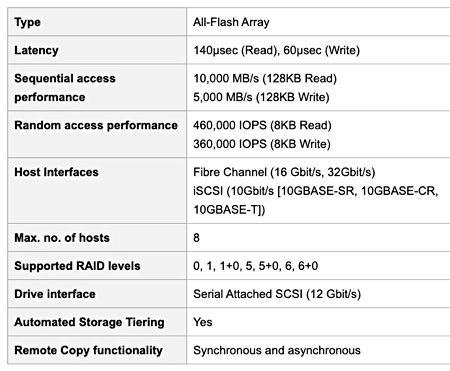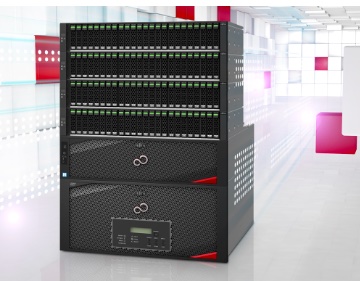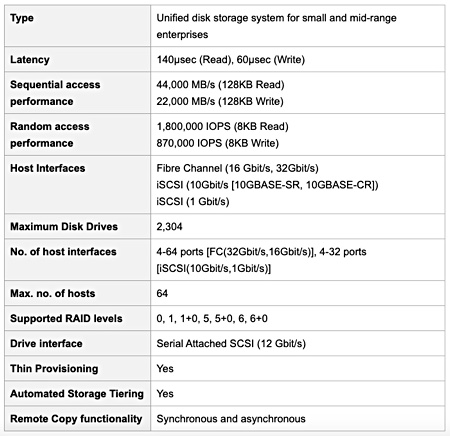Fujitsu went into launch-frenzy mode today, pumping out two new storage arrays, upgrading older models with faster processors, rolling out new management software and announcing three storage benchmarks and a guarantee programme.
The company makes ETERNUS DX arrays in S4 hybrid and S2 all-flash forms. The freshly announced arrays are new generation models, dubbed S5 for the hybrid and S3 for the all-flash. Altogether, the S5 generation provides more IOPS, storage efficiency and lower latency than its S4 predecessor.
Flash

The AF150 S3 uses SAS interface SSDs and is aimed at the small and medium business market. It uses the latest Xeon processors, in common with its big brothers the AF250 S3 and AF650 S3. The AF250 gets larger system memory. The AF250 S3 and AF650S also get hardware-accelerated compression and deduplication, delivering higher IOPS, efficiency and reduced latency.

Hybridisation

The DX900 S5 is a top-end, mid-range, hybrid array with capacity up to 70PB and million-level IOPS capability.
It joins the DX60, DX100, DX200, DX500, DX600 arrays which are all upgraded with Xeon SP processors to match S5 specs. They also get hardware-accelerated storage compression and deduplication in the midrange hybrid arrays (DX200 and higher. DX900 S5 offers compression only), a unified hypervisor-less lean stack and NVMe cache in the midrange.

The high-end DX8900 array retains its S4 generation label but this should update to S5 specs in due course.
Single glass of pane
New ETERNUS SF storage management software covers the all-flash and hybrid arrays It provides monitoring features through a GUI, including shared functions such as replication, migration and the operation of storage clusters.
Fujitsu is also launching Infrastructure Manager (ISM) to manage software-defined data centres to replace ServerView. Fujitsu will support ServerView until March 2021, followed byive years of extended service and support.
ISM provides single-pane-of-glass monitoring of components across data centres, including servers, storage, power and cooling, backups and UPS. It provides automated firmware updates for Fujitsu PRIMERGY servers, ETERNUS and NetApp storage, and Cisco and Extreme Network switches.
There are two support options. ISM Essentials includes monitoring and firmware update of all supported devices, including servers, storage and network switches. ISM Advanced supports multiple hardware configurations, physical and virtual network connection indicators and firmware baseline updates. It is compatible with third party devices and integrates with VMware, Microsoft System Center and Ansible environments.
Benchmarks
Fujitsu has announced three SPC-1 v3 storage benchmarks. These test a storage array with a single business critical-type workload and support deduplication and compression:

Coincidentally, Korean supplier Gluesys also announced an SPC-1 benchmark result today and we have included it in the table above.
The three Fujitsu systems generally have better price performance numbers than the company’s older arrays which provide similar SPC-1 IOPS performance. However the Gluesys array bagged the best-ever price/performance number of any array in this benchmark. Fujitsu’s AF150 S3 is in second place.
You can check out the results here.
YMMV
The new Fujitsu Storage ETERNUS AF/DX Global Guarantee Program commits to zero downtime, data reduction and 100 per cent SSD availability, some degree of customer satisfaction and support for array expansion and growth.
The new ETERNUS storage systems are available to order this month via Fujitsu and its channel partners. The S3 all-flash arrays and S5 hybrids will be generally available in early 2020. Pricing varies according to configuration.
ISM advanced pricing is according to the number of servers and nodes in a system and varies by country. For ISM Advanced, support licenses are mandatory.







